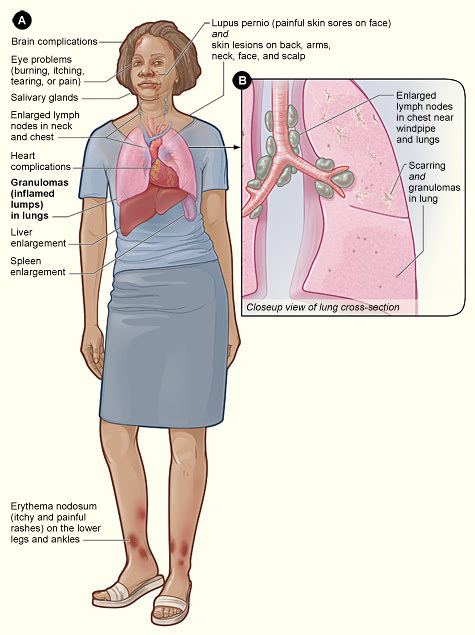DiseasesDB 11797 | ||
 | ||
Löfgren syndrome is a type of acute sarcoidosis that is frequent in Scandinavian, Irish, African and Puerto Rican women. It was described in 1953 by Sven Halvar Löfgren, a Swedish clinician. Some have considered the condition to be imprecisely defined.
Contents
Presentation
It is characterized by enlargement of the lymph nodes near the inner border of the lungs (called "hilar lymphadenopathy") as seen on x-ray, and tender red nodules (erythema nodosum) are classically present on the shins, predominantly in women. It may also be accompanied by arthritis (more prominent in men) and fever. The arthritis is often acute and involves the lower extremities.
Löfgren syndrome consists of the triad of erythema nodosum, bilateral hilar lymphadenopathy on chest radiograph, and arthralgia.
Prognosis
Löfgren syndrome is associated with a good prognosis,with > 90% of patients experiencing disease resolution within 2 years. In contrast, patients with the disfiguring skin condition lupus pernio or cardiac or neurologic involvement rarely experience disease remission.
Genetics
Recent studies have demonstrated that the HLA-DQB1*0201 is strongly associated with Löfgren syndrome. It is associated with HLA-DRB1*03.
Treatment options
NSAIDs (non steroid anti-inflammatory drug) are the usual recommended treatment for Löfgren syndrome.
